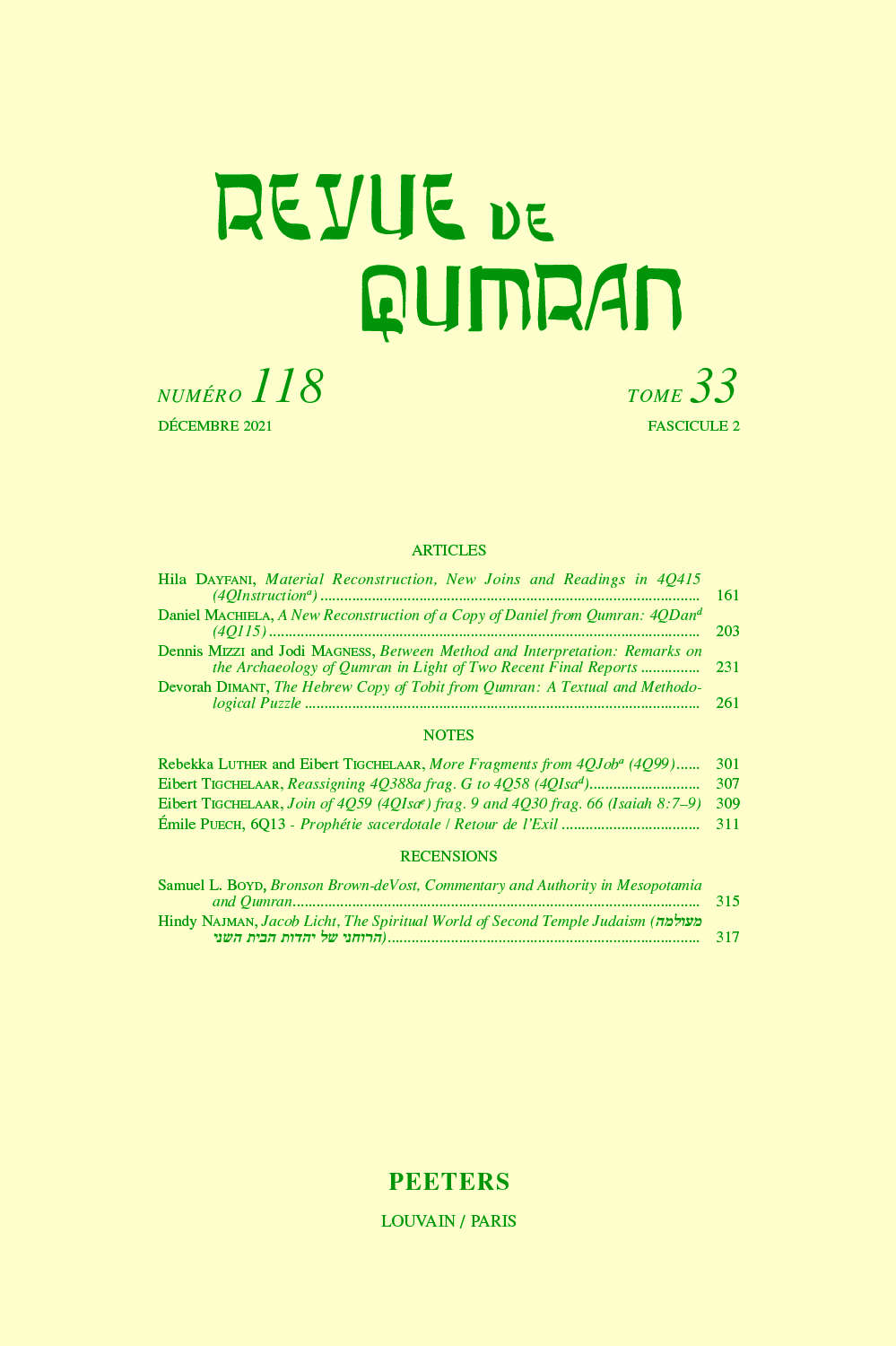 previous article in this issue previous article in this issue | next article in this issue  |

|
Document Details : Title: Between Akkadian Ṭupšarrūtu and Aramaic ספר Subtitle: Some Notes on the Social Context of the Early Enochic Literature Author(s): DRAWNEL, Henryk Journal: Revue de Qumran Volume: 24 Issue: 3 Date: numéro 95, 2010 Pages: 373-403 DOI: 10.2143/RQ.24.3.3206510 Abstract : During the Persian and Hellenistic periods in Babylonia the cuneiform culture moved into the temple precincts to stay there until the extinction of cuneiform writing. The priestly groups of āšipu, or incantation priests, and kalû, or lamentation priests, became main bearers of cuneiform writing and culture, astronomy, astrology and mathematics included. The influence of Late Babylonian culture on Jewish tradition is palpable in the Enochic texts and in the Visions of Levi (= VLev, the so-called Aramaic Levi Document) in the following texts: Aramaic versions of the lexical lists (VLev 32a-36), lunar visibility periods (4Q208 and 4Q209), general characterization of Babylonian magic and divination (1 En. 8:3; 4Q201 frg. 1 iv; 4Q202 frg. 1 iii). The list of sciences taught by the Watchers in 1 En. 8:3 closely corresponds to what we know today about the profession of the Babylonian āšipu. Such an influence together with the critical attitude towards the āšipu disguised as Watchers is most probably due to the Jewish appropriation of the Aramaic version of Babylonian scholarship; it is not certain how the appropriation occurred, although the intermediary of the Aramaic scribes, sepīru, might be assumed. There are no historical accounts to prove that the Jewish scribes in Babylonia were trained in the highly sophisticated and profoundly specialized areas of cuneiform scholarly literature. |
|
